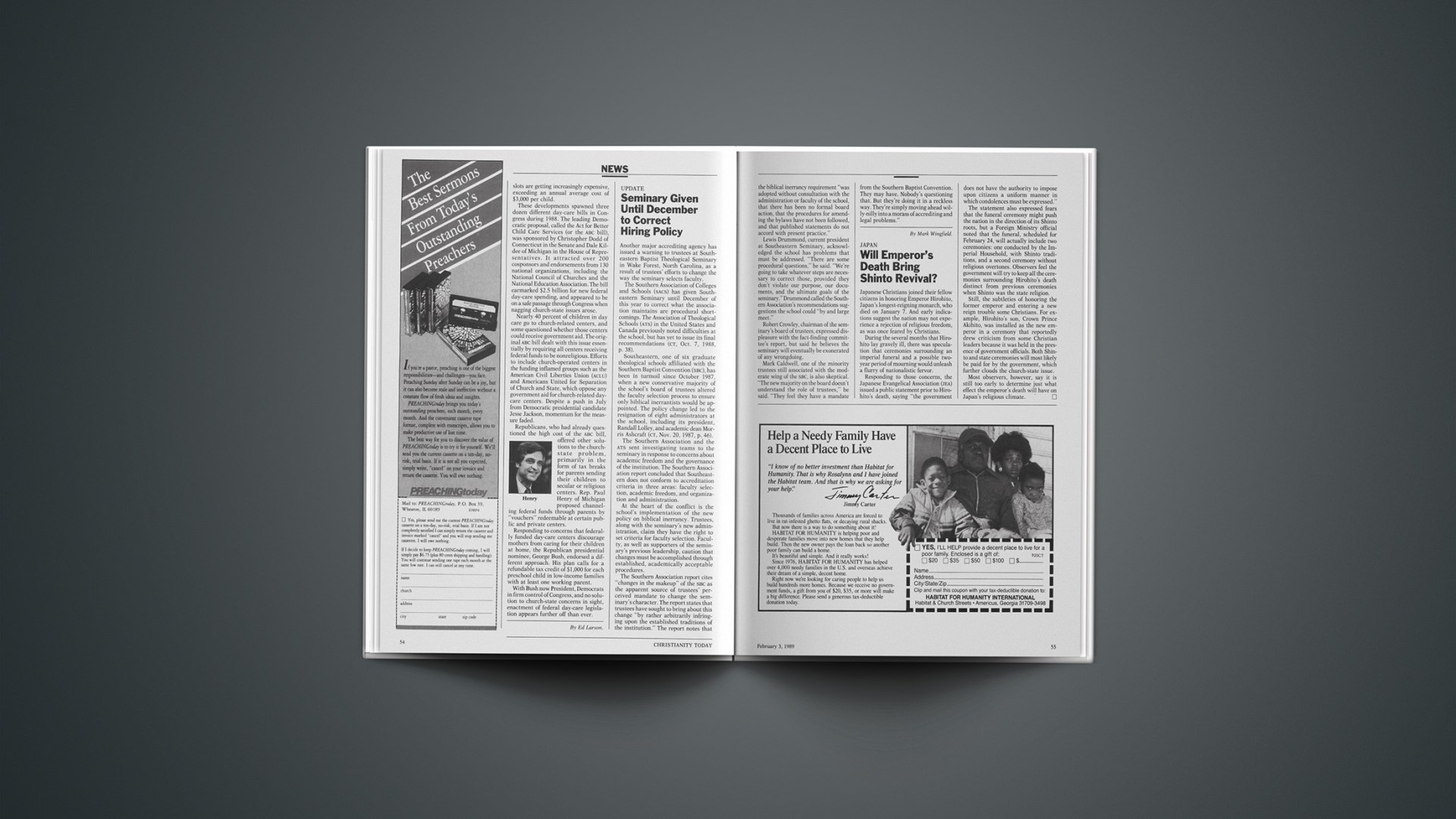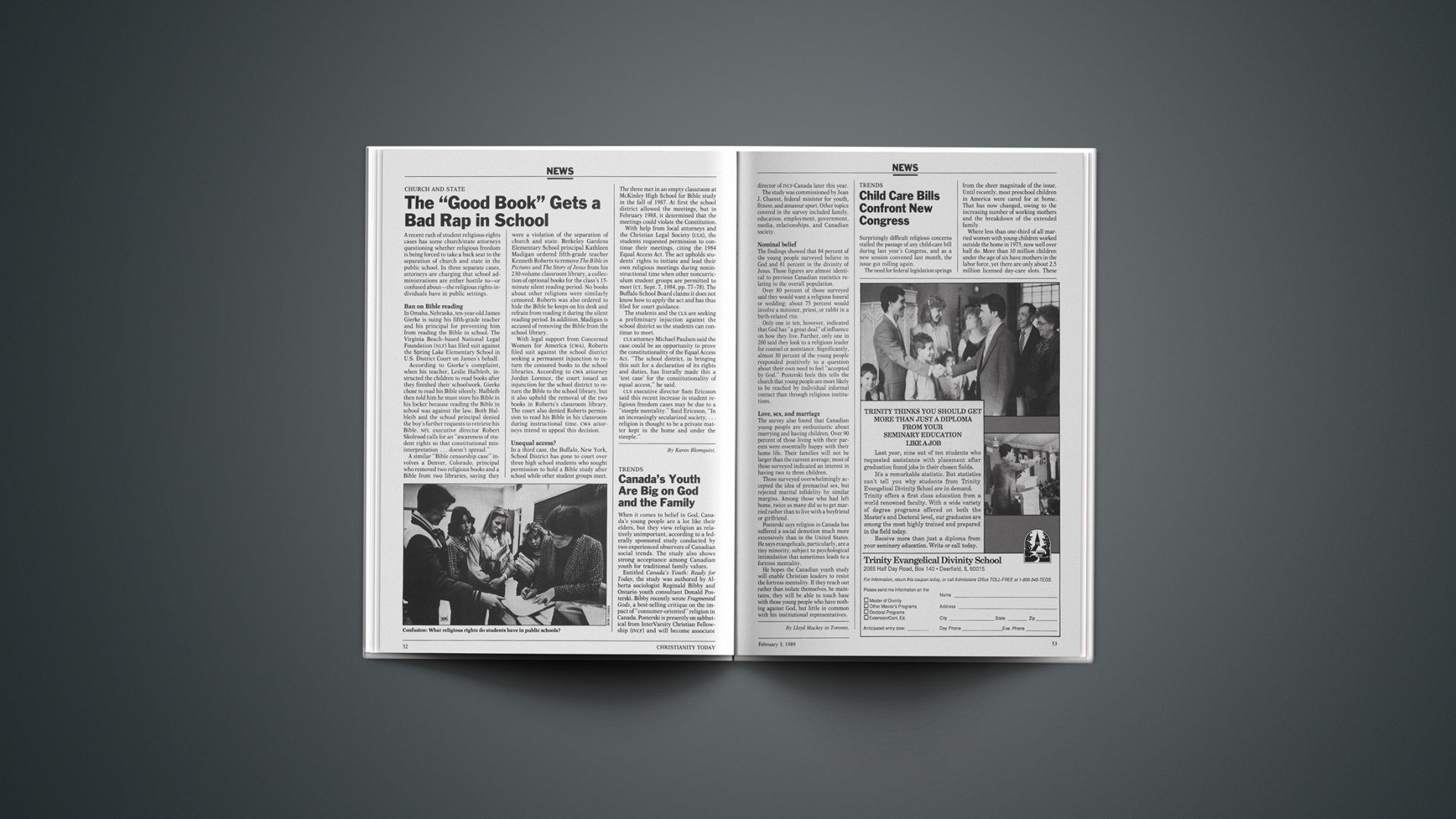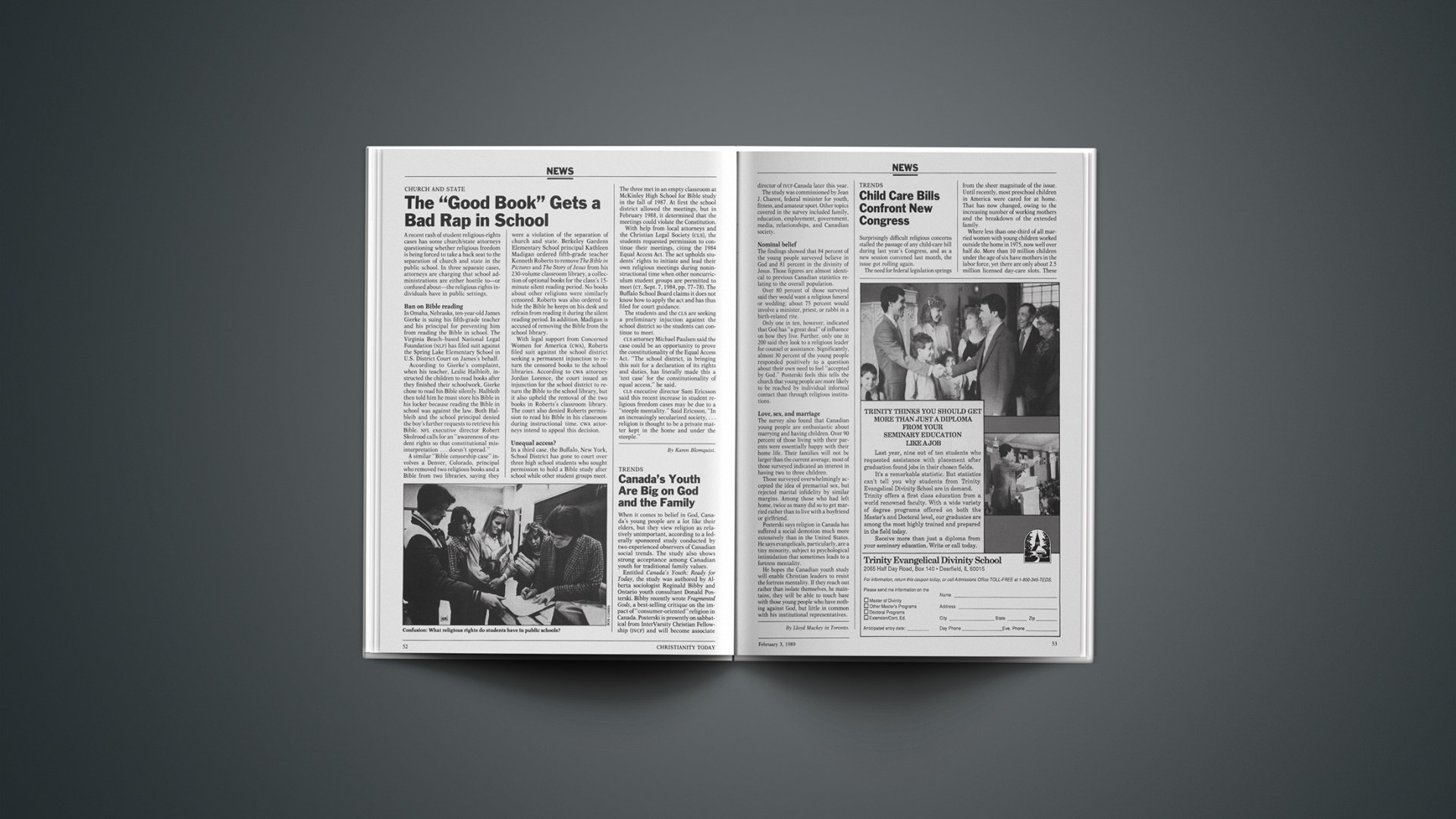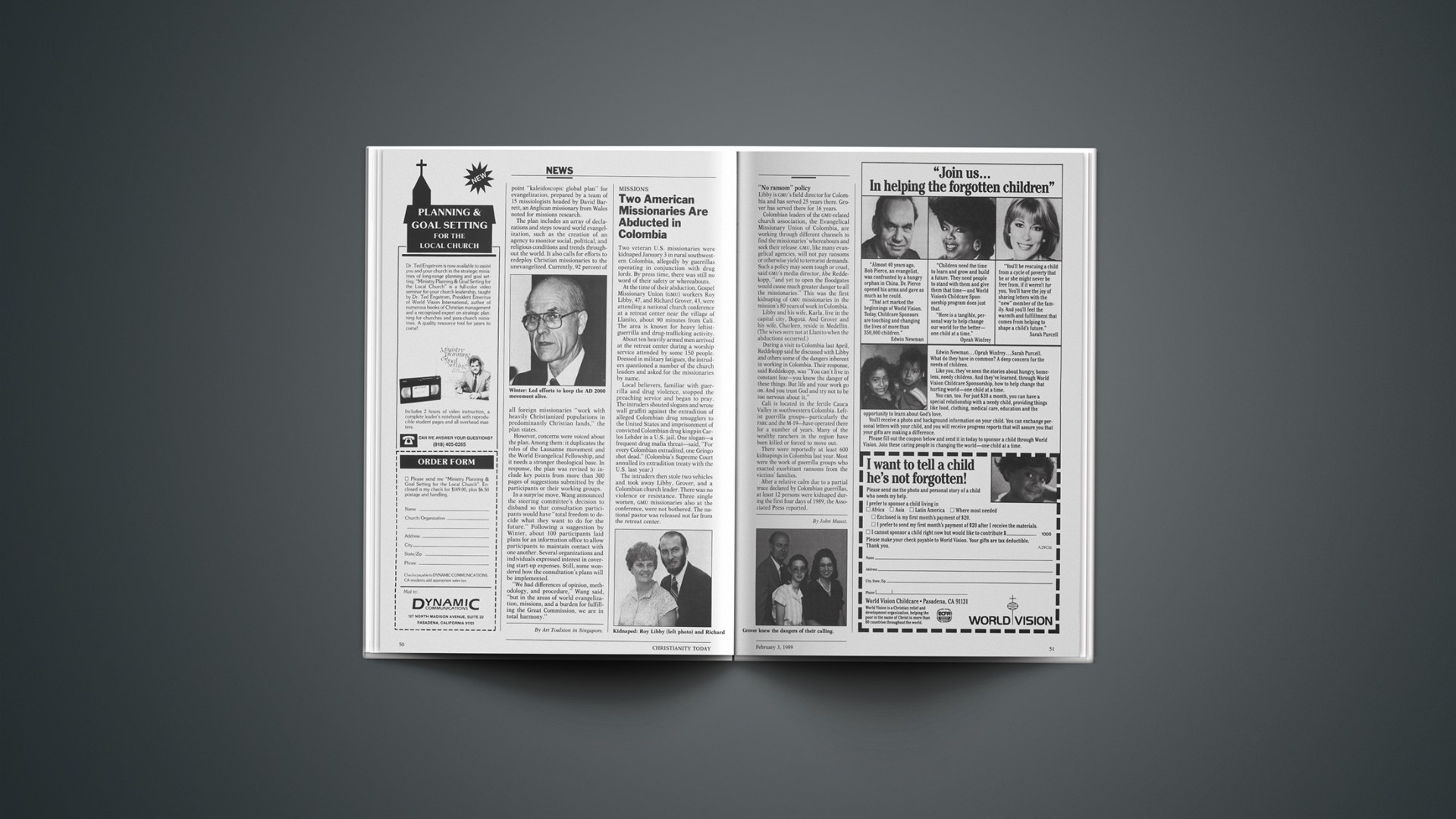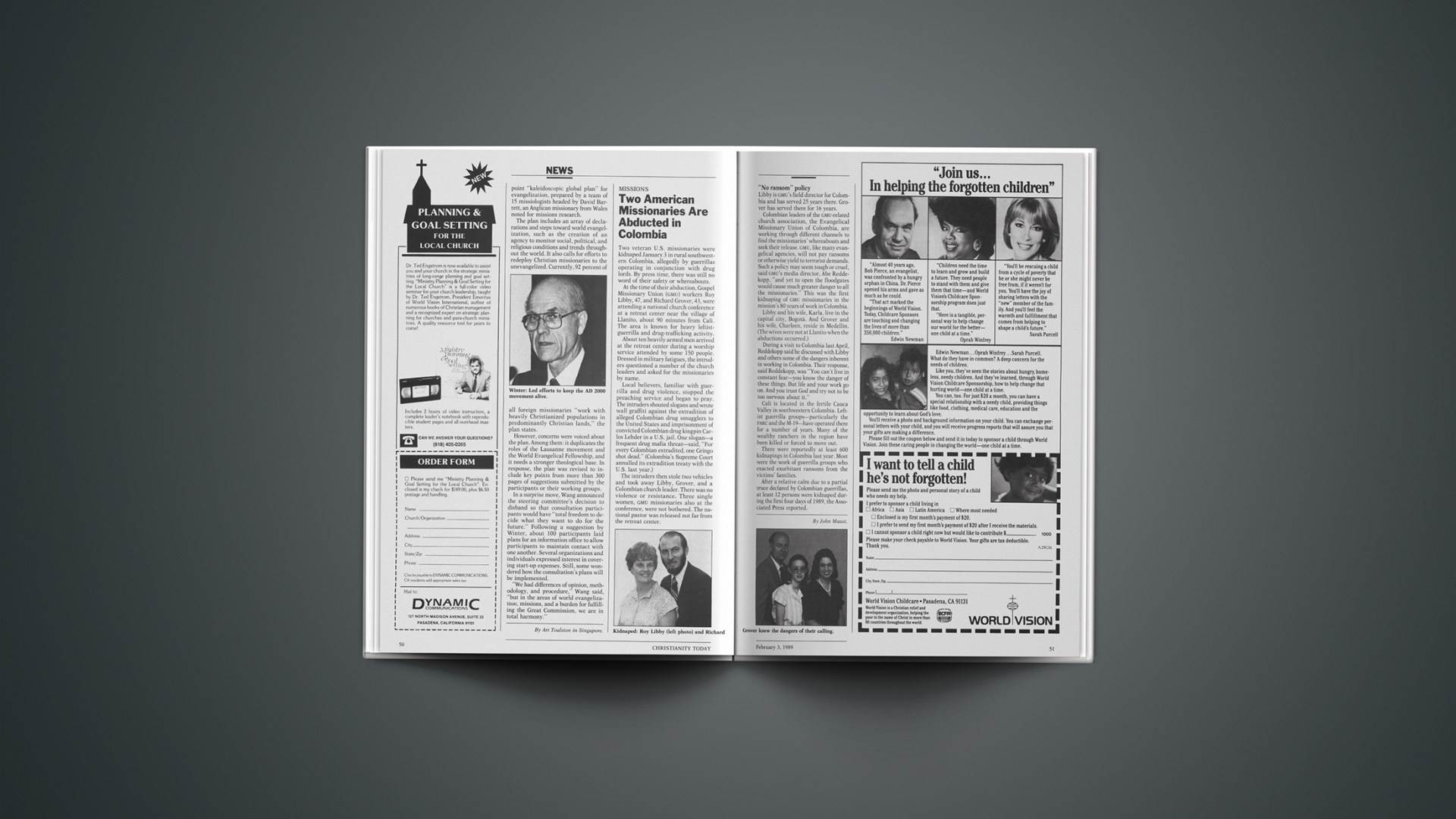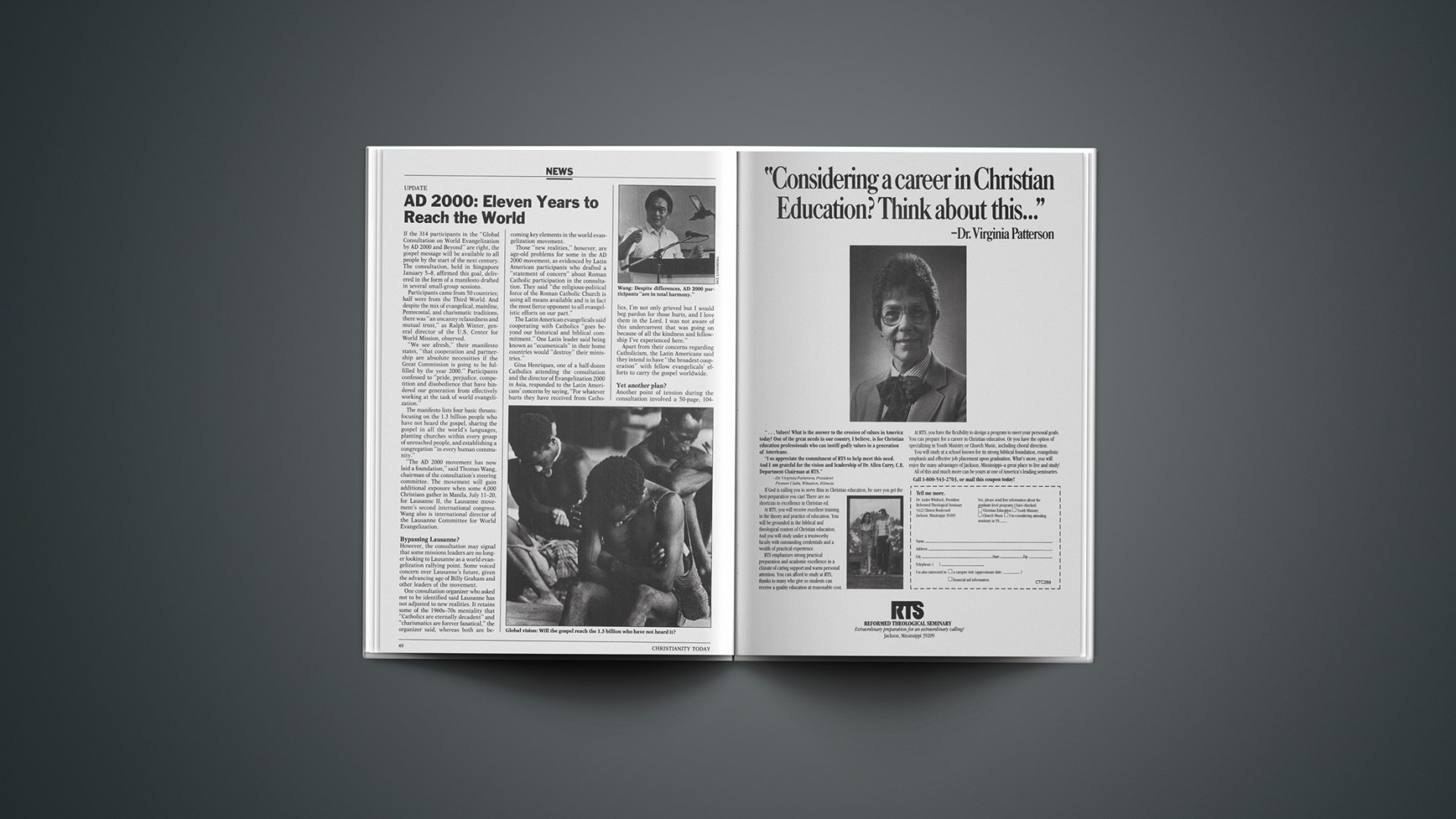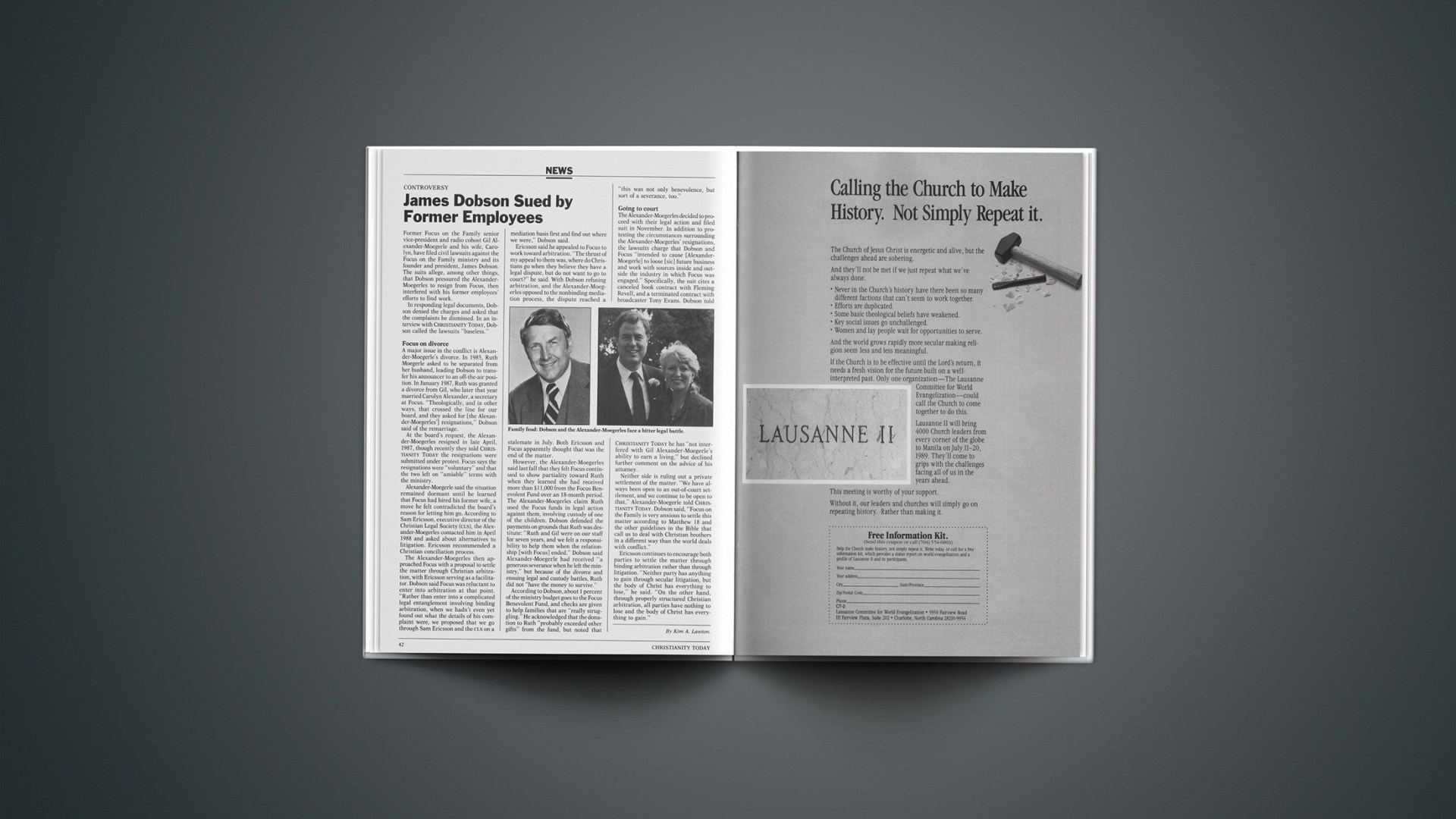Heavy Drinking: The Myth of Alcoholism As a Disease, by Herbert Fingarette (University of California Press, 166 pp.; $16.95, hardcover). Reviewed by James Alsdurf, forensic psychologist for the Hennepin County Bureau of Community Corrections, Minneapolis, Minnesota.
The concept that alcoholism is a disease first gained popularity in the early 1960s, and many in the Christian community—almost by default—widely accepted this notion along with the rest of society. Now, however, a leading expert on alcohol abuse proposes that alcoholism is primarily a behavioral disorder rather than a physiological disease, and that the very concept of “alcoholism” is simplistic and arcane.
“Almost everything that the American public believes to be the scientific truth about alcoholism is false,” writes Herbert Fingarette, a consultant on alcoholism and addiction to the World Health Organization and a fellow of the Stanford Center for Advanced Studies and Behavioral Sciences. In this controversial book, Heavy Drinking: The Myth of Alcoholism As a Disease, Fingarette writes that the disease model removes the problem from the realm of human responsibility and “denies the spiritual dimension” of alcohol dependency. For this reason, he charges, the church should strongly oppose the disease model for alcoholism.
No Scientific Evidence
Classic theory in the study of alcoholism holds that alcoholics cannot control their drinking and that the breakdown of self-control is the primary symptom of the disease. Yet Fingarette examines the body of experimental observation and asserts that there is no scientific evidence pointing to this loss of control. Fingarette writes that the very concept of alcoholism misleads us into believing that the condition is a medically treatable malady that follows a certain course.
There are “many kinds of heavy drinking that arise from many different causes and produce many different patterns of associated problems,” Fingarette asserts. The classic steps for developing alcoholism—which include social drinking; drinking in greater amounts; private, isolated drinking; and eventually periods of blackout and loss of control—do not describe even most heavy drinkers, according to Fingarette. He notes that many heavy drinkers with severe problems “mature out” of trouble and that the alcoholic’s descent to the “bottom” is not inevitable.
Fingarette traces the history of alcoholism-as-a-disease thinking and declares that cultural values, not careful observation or scientific evidence, determined the widespread acceptance of the disease model. As part of “collegial conviviality,” Americans drank much more alcohol from colonial days to the early nineteenth century than they presently do. But as social and cultural beliefs changed, largely affected by new scientific understandings of physics, chemistry, and anatomy, the concept of disease became a “touchstone in social thought,” Fingarette writes, and moral and social ills were “perceived as pathologies of either the individual or the body politic.”
The concept of alcoholism as a disease became entrenched when research physiologist E.M. Jellinek proposed an explanation of alcoholism in 1946 and 1952, which seemed to confirm major elements of the Alcoholics Anonymous view. This view held that some people have “a unique biological vulnerability to alcohol and they develop a special kind of ‘allergy.’ ” Fingarette reveals, however, that Jellinek’s nodal article slacked scientific foundation, as Jellinek himself apparently acknowledged in 1960. Furthermore, data were produced in the late 1960s that contradicted Jellinek’s paradigm and indicated that the disease concept failed to describe many heavy drinkers. Today, “no leading authorities accept the classic disease concept” for alcoholism, according to Fingarette.
Convenient Label
Although he rejects the idea of a “malign conspiracy,” Fingarette argues that political, economic, and health services interests have “actively promoted the scientifically discredited classic disease concept.” He also points to the general public as a major player in the prevalence of the disease model, because the public does not want to accept the limitations of science or technology. “We prefer not to hear that heavy drinking and alcoholism are merely labels that cover a variety of social and personal problems caused by the interplay of many poorly understood physiological, psychological, social, and cultural factors,” Fingarette writes. He does concede, however, that alcohol dependence lies on a continuum and that in scientific terms “behavior disorder” would often be a better semantic choice than the word “disease.”
Despite the fact that Fingarette rejects the disease concept of alcoholism, this enlightening and challenging book is a call to compassion for heavy drinkers. Fingarette’s bold message is certain to stimulate debate among those who have either a personal or professional stake in dealing with alcoholism, including Christians who minister to individuals with drinking problems.
Given the brevity of this clearly reasoned and well-researched book, and the ease with which both professionals and laypeople are able to grasp the issues presented, Heavy Drinking will no doubt become a seminal volume in the field of alcoholism treatment.
Land of Promise, Land of Strife, by Wesley G. Pippert (Word, 264 pp.; $16.99, hardcover). Reviewed by Elwood McQuaid, a conference speaker for Moody Bible Institute who has led numerous tours to the Holy Land.
As senior Middle East correspondent for United Press International from 1983 to 1986, Wesley Pippert moved among the foremost newsmakers of that critical region, gathering insights and impressions available to only a few chosen professionals. Pippert’s observations as an evangelical Christian journalist make this book on modern Israel’s first 40 years interesting—if somewhat controversial—reading.
The three-part work, which Pippert says “was shaped by almost every part of my life,” is an anecdotal analysis of Israel, Lebanon, and the occupied territories. Pippert portrays Jews and Arabs in conflict over the land, and he closes with a look at prospects for peace, “more as a hope than as a reality.”
Looking For Villains
Considering all the suffering on both sides, “neither Israeli nor Palestinian leaders work very hard for justice and peace,” Pippert writes. He devotes a full chapter to arguing the case that the real villain in the Middle East is the West: Britain and France take the first rap, and then America and the Soviet Union get their turn as “gun-slinging” military entrepreneurs.
Wars, terrorism, and internal battles among Jewish and Arab factions are traced from the 1948 War of Independence to the invasion of Lebanon—“Israel’s Vietnam,” Pippert calls it—and on to the traumatic Palestinian uprising. A brief historical sketch of regional developments since the late 1800s sets the background for discussing these conflicts.
The former bureau chief picks his way through a helpful, though at times repetitious, presentation of Israel’s people—Jews, Palestinians, and Christians—and sorts through some of the complexities regarding who these people are, where they came from, what they want, and the prospects for accomplishing their goals.
According to Pippert, the most explosive situation within Israel today is the controversy between ultraorthodox and secular Jews. “All other conflict, including that of Arab and Jew, pales into insignificance beside this,” Pippert writes. “It is a battle of zealots versus secularists, not dissimilar from the battles waged in Islam and Christianity. ‘Israel is fighting a holy war.’ ”
Israel’s 26 to 28 Messianic Assemblies (about 2,000 believers) live out their witness for Jesus in this turbulent environment. The author provides some snapshots of life among these congregations as well as the lives of missionaries and Arab believers.
Uneven Images
It comes as no surprise that most of Pippert’s journalistic peers are “more sympathetic to the Palestinian cause than to Israel.” And while he claims personal “affection for both the Jew and the Arab,” Pippert leaves the impression that he doesn’t really like Israelis very much. His uneven treatment portrays “brash” Israelis living in a country “in which there is inordinate laziness and sloppiness.” Because of this, Israel has become an inhospitable “Goliath,” which almost always hits first in order to “draw first blood.” Arabs, on the other hand, are generally depicted as courteous and dignified. “Nattily dressed” storekeepers exhibit consummate “savoir-faire.” An Arab pickman on an archaeological dig is described as an “aristocrat.”
Pippert also raises eyebrows with some questionable observations, such as, “There have been perhaps even more Arab casualties of Jewish terrorism than vice versa.”
One might excuse some slant for the sake of balancing a record that frequently has romanticized the Israeli side of the story to the exclusion of Jewish flaws and legitimate Arab interests. One cannot, however, dismiss the author’s handling of the Palestine Liberation Organization and Yasir Arafat. In one paragraph, Arafat is extolled in terms that stand in sharp contrast to his record. Pippert wonders why Israel doesn’t stop calling Arafat a terrorist, and he seems to enjoy prodding officials in the Israeli Foreign Ministry about why Israel refuses to talk to the PLO.
This aspect mars an otherwise informative book, which provides a good look at the emotional, military, and political quagmire that is now the Middle East.
Pippert ends his book by assigning common guilt (even the “West, Christians included, must accept a huge share of the guilt”) and by challenging Jew and Arab to commit themselves to seeking peace, equity, and justice. Certainly the constant use of the word shalom represents the yearning of people and governments in the Middle East. But peace is more than the absence of war; it is the fulness of life.” In that sentiment, all readers may join with Pippert.
The Anointed Community: The Holy Spirit in the Johannine Tradition, by Gary M. Burge (Eerdmans, 269 pp.; $19.95, paper). Reviewed by Charles S. Gaede, assistant professor of Bible and theology, Southwestern Assemblies of God College, Waxahachie, Texas.
When I read a book, I mark its interesting and significant statements; thus the depth of my interaction with an author becomes visible. The pages of my copy of The Anointed Community reveal a thought-provoking book. They are filled with asterisks, checks, brackets, and underlines.
Gary Burge, professor of philosophy and religion at North Park College in Chicago, offers a scholar’s book and an academician’s delight. Based on the research for his dissertation, The Anointed Community is extensively documented with a bibliography of almost 750 entries, with both author and Scripture indexes.
Set in the context of Johannine literature, the synoptic Gospels, and the Jewish and Greek culture of the first century, The Anointed Community powerfully affirms the life in the Spirit for Christians of all times. If you generally focus on Paul’s letters to learn about the Holy Spirit, as I do, then you may be surprised to find Spirit-living Christians in the literature of John. Burge calls these Christians a “pneumatic community.”
Inseparable Personalities
Burge’s description of the pneumatic community contains three significant aspects. The first, which he develops from the Gospel of John, is the relationship of Jesus Christ to the Spirit. Burge carefully avoids the statement that the Spirit is Christ in another form, yet he presents these two persons of the Trinity as inseparable personalities. Based on this analysis, Burge offers three insights: (1) “Any experience of the Spirit in the Johannine economy which is not also a Jesus experience is rendered inauthentic”; (2) “Any theology which separates salvation from the life-creating Spirit is inadequate”; (3) “But at the same time the reception of grace and the birth of a Christian cannot be devoid of pneumatic experience.”
The second intriguing aspect of the pneumatic community is Burge’s proposed setting for the dialogue between John’s gospel and epistles. Burge does not present 1 John as a defense against a heresy that questions the incarnation of the Son of God, a common interpretation of John’s purpose. Instead, he suggests that a tension has arisen within the church concerning two functions of the Spirit. As Burge sees it, this tension is rooted in the “recalling” activity of the Spirit (“He will remind you of everything,” John 14:26), and the Spirit’s “revelatory” function (“He will guide you into all truth,” John 16:13). According to Burge, some Christians had claimed that the Spirit revealed truth to them which others did not understand. This new truth, however, was inconsistent with the gospel message of Jesus, which John proclaimed earlier. Burge calls this reception of inconsistent truth an abuse of the revelation function of the Spirit.
The setting that Burge develops for this tension is significant for at least two reasons. First, it may establish some parallels to the Corinthian church, in which case we learn that the problems of living the life in the Spirit during the first century were widespread. We also learn that even though different Christian groups struggled with different issues, both Paul and John centered the functions of the Holy Spirit in Christ.
Second, the early literature of modern Pentecostalism (1906–08) shows that this movement experienced a similar problem. My observations of the literature and practices of the more recent charismatic movement suggest that this group also wrestles with the issue of inconsistent revelation. These groups and other evangelicals will find Burge’s work both timely and applicable.
Resolving The Tension
The third exciting aspect of Burge’s book is that he attempts to develop a solution to this tension. He searches the epistles of John and finds evidence of the apostle’s efforts to instruct his converts. The apostle, Burge writes, appeals to the historical record of the life and teachings of Jesus (recollection) as the basis for evaluating the new truth (revelation). The recollection work of the Spirit is the “control” of the revelation activity, and we are reminded again of Paul’s efforts to keep his converts faithful to the true gospel.
If Burge’s analysis of the setting of John’s gospel and epistles can be sustained, then Burge has broadened our perspective of the spiritual life of first-century Christians. In conjunction with Paul’s writings, we see that life in the Spirit is both desirable and subject to abuse. John the apostle, however, neither condones the spiritual abuses nor restrains the roles of the Spirit in the Christian life. Instead, John affirms the necessity of the Spirit and gives instructions for living a positive, exciting spiritual life. Consequently, Christians of all ages are encouraged to enter the life of the Sprit with confidence and enthusiasm.



